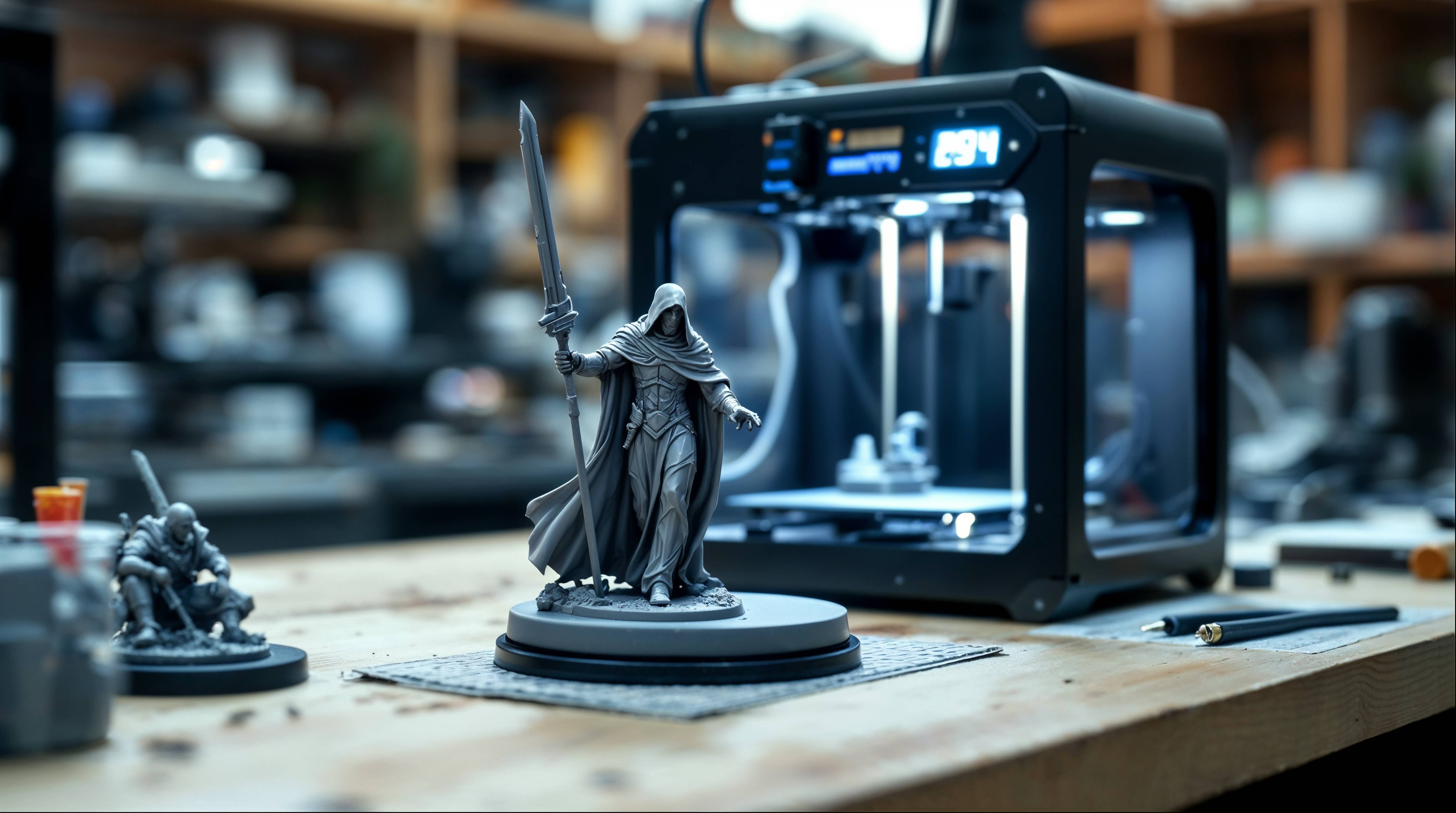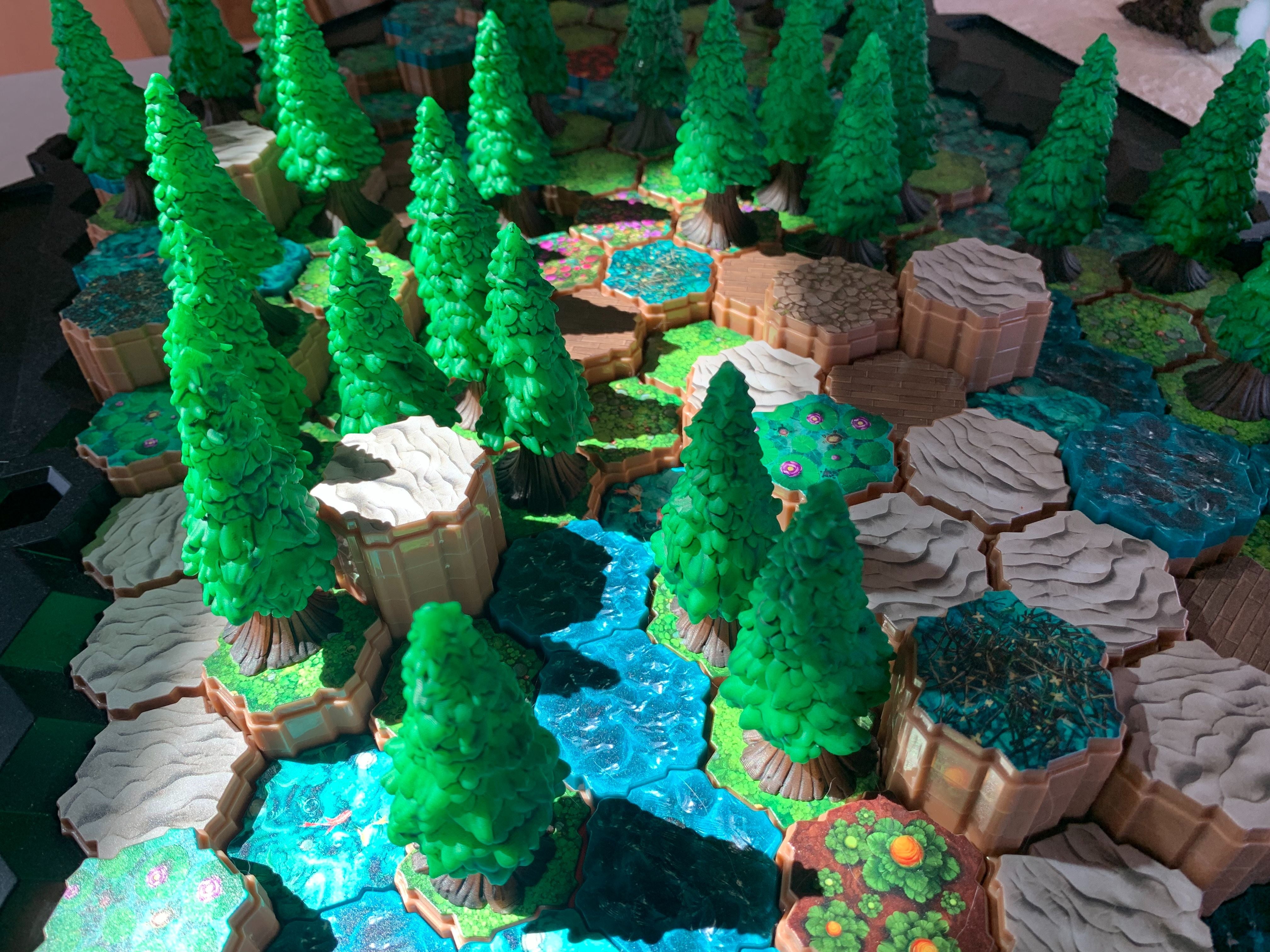The Evolution of Tabletop Gaming: 3D Print Technology Revolutionizes Miniatures
Tabletop gaming has undergone a remarkable transformation in recent years, largely due to the accessibility of 3D printing technology. No longer constrained by mass production limitations, gamers now have unprecedented freedom to create customized miniatures that perfectly match their imagination. This technological revolution is democratizing miniature creation and fundamentally changing how we think about tabletop gaming accessories.
The intersection of advanced 3D modeling software, affordable printing equipment, and online sharing platforms has created a vibrant ecosystem where creativity flourishes without traditional barriers. From dungeons and dragons enthusiasts to wargaming veterans, individuals across the gaming spectrum are embracing these new capabilities to enhance their playing experience.
- Miniatures On-Demand: 3D Print Technology Changes Everything
- The Evolution of Tabletop Gaming: 3D Print Technology Revolutionizes Miniatures
- The Evolution of Tabletop Gaming: 3D Print Technology Revolutionizes Miniatures
- From Mass Production to Personal Creation
- Technical Foundations of 3D Printed Miniatures
- Printer Technologies Driving the Revolution
- Materials and Finishing Techniques
- Community-Driven Design and Innovation
- Open Source Communities and File Sharing
- Economic Implications for Gamers and Publishers
- Cost Analysis: 3D Printing vs. Traditional Purchasing
- Changing Business Models for Publishers
- Digital Sculpting and Character Personalization
- Technological Advances on the Horizon
- Getting Started with 3D Printed Miniatures
- Resources for Beginners
- Frequently Asked Questions
- Is 3D printing miniatures legal?
- What's the learning curve for creating my own designs?
From Mass Production to Personal Creation
Traditionally, gaming miniatures were produced through injection molding—a manufacturing process requiring substantial initial investment and producing thousands of identical pieces. This economic reality limited production to designs with broad market appeal, leaving many niche interests underserved. The advent of accessible 3D printing technology has dismantled these constraints, allowing for economically viable small-batch production, on-demand single model prints, or even one-off custom pieces. Businesses like Only-Games, a MyMiniFactory company, are leading the way in on-demand 3D printing.
The paradigm shift from centralized manufacturing to distributed creation represents more than just a technical evolution—it's a fundamental reimagining of the relationship between gamers and their physical playing pieces. Now, the distance between conceptualizing a character and holding its physical representation has collapsed dramatically.
Technical Foundations of 3D Printed Miniatures
Understanding the technical underpinnings of 3D print technology helps appreciate why this revolution is occurring now rather than decades ago. The convergence of several technologies has created a perfect storm of innovation in the miniature gaming space.
Accessible Printer Technologies Driving the Revolution
Various 3D printing methodologies offer different advantages for miniature creation. Fused Deposition Modeling (FDM) printers, which extrude melted plastic filament layer by layer, provide an affordable entry point for many hobbyists. However, the real game-changer for miniature creation has been the increasing affordability of resin-based printers using technologies like Stereolithography (SLA) and Digital Light Processing (DLP).
These resin printers offer substantially higher resolution—frequently achieving details at 0.05mm or finer—making them ideal for capturing the intricate details that define compelling miniatures. The ability to reproduce fine features like facial expressions, armor textures, or weapon details represents a quantum leap beyond what was previously available to non-professional creators.
"It's all due to the lowering of barriers to entry—not just access to printing, but also the ability for people to learn CAD software—and thriving communities" - Alex Ziff, MyMiniFactory Co-CEO
Materials and Finishing Techniques
The material science behind 3D printing continues to evolve rapidly. Modern printing resins offer impressive mechanical properties, including flexibility, durability, and even specialty characteristics like transparency or glow-in-the-dark effects. Post-processing techniques have likewise matured, with hobbyists developing effective workflows for cleaning, curing, and preparing miniatures for painting.
Advanced finishing methods including vapor smoothing, gap filling with specialty compounds, and priming techniques optimized for 3D printed surfaces have collectively elevated the quality of home-produced miniatures to rival commercial offerings. The knowledge sharing within the community continues to refine these processes, raising the quality ceiling with each passing month.
Community-Driven Design and Innovation
Perhaps the most profound aspect of the 3D printing revolution isn't the technology itself, but how it has catalyzed community collaboration and shared creativity. Digital design files can be instantly duplicated and distributed globally, creating unprecedented opportunities for collaborative innovation.
Open Source Communities and File Sharing
Beyond individual creators, the open-source ethos has firmly taken root in the 3D printable miniature community. Platforms like Thingiverse, Printables, and specialized gaming repositories host thousands of freely available designs, while crowdfunding platforms enable designers to receive compensation for premium creations.
This ecosystem has developed sophisticated collaboration methods, including remixing (building upon others' designs with attribution), parametric customization (modifying base designs through automated tools), and community testing/refinement cycles. The result is an unprecedented pace of innovation where designs evolve rapidly through collective intelligence rather than isolated corporate research and development. This ethos is at the core of Adventure Together and SOURCE as well, and we cannot wait to release our open source license in the coming months to unlock the potential of the community to contribute to a thriving culture of innovation and community collaboration.
Economic Implications for Gamers and Publishers
The 3D printing revolution carries significant economic implications for both consumers and traditional publishing companies. Understanding these dynamics helps contextualize the growing popularity of printed miniatures.
Cost Analysis: 3D Printing vs. Traditional Purchasing
The economics of 3D printing miniatures deserves careful analysis. While the initial investment in printing equipment represents a significant hurdle, the per-miniature cost drops dramatically thereafter. Contemporary calculations suggest the following approximate costs:
| Production Method | Initial Investment | Per-Miniature Cost | Break-Even Point |
|---|---|---|---|
| Commercial Purchase | $0 | $10-30 | N/A |
| Basic Resin Printer | $300-500 | $0.50-2.00 | ~20-40 miniatures |
| Premium Resin Printer | $800-1,500 | $0.50-2.00 | ~50-100 miniatures |
For dedicated hobbyists who might purchase dozens or hundreds of miniatures annually, the economic case for personal production becomes compelling. Additionally, the ability to print terrain pieces—typically much more expensive than individual character miniatures when purchased commercially—further improves the value proposition.
Changing Business Models for Publishers
Traditional miniature manufacturers are adapting to this shifting landscape with varying approaches. Some have embraced digital distribution by offering official 3D model files of their intellectual property. Others focus on premium materials and production quality that exceed what's currently achievable through home printing. The most forward-thinking companies are exploring hybrid models that leverage the strengths of both approaches.
Publishers increasingly recognize that competing directly against the flexibility and customization of home printing is challenging. Instead, many are repositioning to offer complementary products and services, including high-quality paints, specialized tools, or premium pre-painted collector's items that serve different market segments.
Digital Sculpting and Character Personalization
Digital sculpting tools like ZBrush, Blender, and even browser-based applications have dramatically lowered the barrier to creating original miniature designs. The ability to work non-destructively—making changes without permanently altering the model—encourages experimentation and iterative improvement that traditional physical sculpting makes difficult.
Character personalization has flourished in this environment. Gamers can now create miniatures that precisely match their character sheets or modify existing designs to incorporate unique equipment, poses, or physical characteristics. This level of customization fosters deeper player-character connections and enhances the roleplaying experience through improved visual representation.
Technological Advances on the Horizon
Several technological developments promise to enhance the capabilities available to miniature creators:
- Multi-material printing that can combine different properties (rigid and flexible, opaque and transparent) within a single print process
- Increased printing speeds through next-generation resin formulations and improved light engines
- Automated support generation and removal systems that significantly reduce post-processing labor
- Color printing technologies becoming more affordable and accessible to hobbyists
- Artificial intelligence tools that can generate or modify 3D models based on text descriptions or 2D concept art
These advancements will collectively lower barriers to entry while simultaneously raising the quality ceiling for what's possible through home production. The gap between professional and hobbyist-created miniatures will likely continue to narrow.
Getting Started with 3D Printed Miniatures
For those inspired to explore this creative frontier, several pathways offer entry points depending on interest and commitment level.
Resources for Beginners
If you're intrigued by 3D printed miniatures but not yet ready to invest in printing equipment, several options exist:
- Commission printing services that can produce miniatures from publicly available or purchased files
- Join local makerspaces or libraries that may offer 3D printing facilities and training
- Participate in online communities where file sharing and group purchases of printed models are common
- Explore digital sculpting with free software before committing to the printing aspect
These approaches allow newcomers to experience the benefits of custom miniatures without the full initial investment, making the technology's advantages more accessible to casual gamers.
Frequently Asked Questions
As the 3D printing community continues to grow, several common questions arise from newcomers:
Is 3D printing miniatures legal?
The legality of 3D printing miniatures depends entirely on the source of the 3D model file. Creating and printing original designs or those explicitly licensed for personal production is perfectly legal. However, unauthorized reproduction of copyrighted or trademarked miniature designs may constitute intellectual property infringement.
Many designers offer their files under Creative Commons or similar licenses that clearly specify permitted uses. Always verify the license terms before printing, sharing, or especially selling printed models based on another creator's design.
What's the learning curve for creating my own designs?
Digital sculpting has varying learning curves depending on your approach. Character creation tools with pre-built components offer the gentlest introduction, allowing assembly of existing parts into new combinations. Full sculpting programs require more investment to master but provide unlimited creative freedom.
Most practitioners find they can produce usable designs within a few weeks of dedicated practice, with mastery continuing to develop over months and years. The supportive online community provides extensive tutorials, feedback, and encouragement for developing artists.
The revolution in 3D printed miniatures represents far more than a technological shift—it's a fundamental democratization of creative power. As tools become more accessible and communities continue to flourish, we're witnessing the early stages of a transformation that will likely redefine tabletop gaming for generations to come.



View Comments
Unlock Hours of Fun with These Must-Try Popular Board Games
Family Board Games Are Trending in 2025: Party Games to 2‑Player Gems
What are some of your favorite sites for downloading 3D miniatures? Which is better, SLA or FDM? Let me know in the comments!